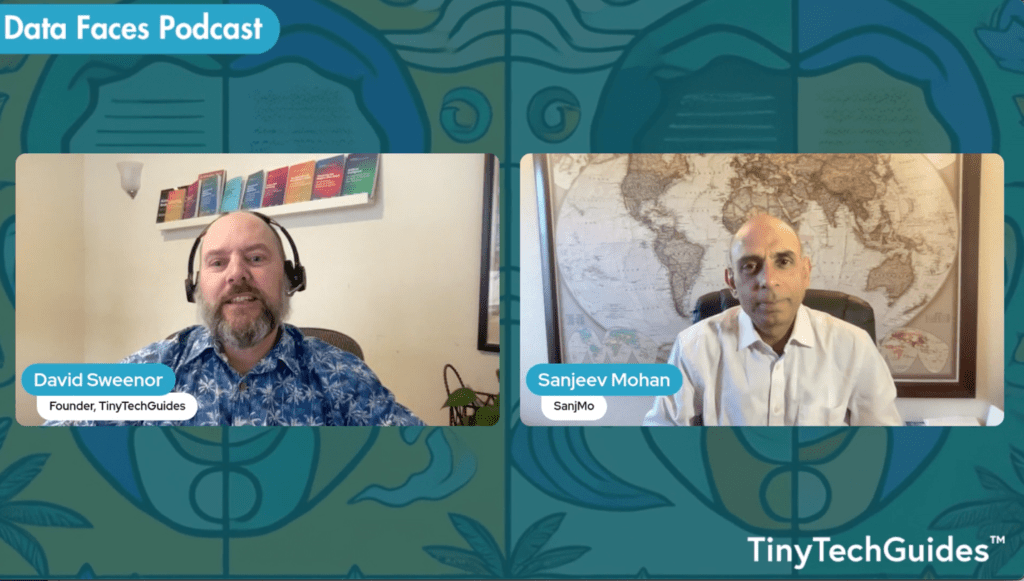
As the generative AI aura begins to fade, organizations realize that the technology is not the panacea they once thought. To move beyond tinker-toy prototypes to enterprise-grade AI systems is challenging, to say the least. McKinsey estimates that only 11% of organizations have adopted generative AI at scale.[1] Organizations are hoping to automate tasks, optimize processes, and improve overall productivity are excited about the potential. The excitement is certainly justified—AI can generate content, retrieve critical information, and summarize large corpora of data at a scale and speed unmatched by human labor. However, there’s a critical oversight many enterprise leaders are making: without a structured understanding of AI patterns, these initiatives are likely to fail.
Generative AI is not a one-size-fits-all solution. In order for AI to improve organizational productivity, it must be deployed using specific frameworks—AI patterns—that align the technology with the company’s use cases. There are five key AI patterns that, when applied correctly, offer a clear pathway to improving efficiency, decision-making, and automation: Author, Retriever, Extractor, Agent, and Forecast/Recommend. The challenge lies in how well these patterns are understood and implemented. Ignoring or misapplying them can result in wasted time, resources, and missed opportunities.
The use cases and patterns discussed in this blog are taken from The Generative AI Practitioner’s Guide: LLM Patterns for Enterprise Applications by Arup Das and myself. Please consider supporting small publishers by making a purchase and liking this blog.
The Importance of AI Patterns: It’s Not Just About Technology
We’ve all heard the term self-learning, and there’s a common misconception that AI will automatically and systematically learn from the past and improve itself over time. Many executives believe they can simply introduce AI into their operations and expect immediate returns. But this approach overlooks a crucial point: AI is only as effective as the patterns through which it’s deployed. AI patterns are reusable frameworks that ensure AI is applied correctly to specific problems. Without them, businesses risk costly underperformance and delays.
To illustrate this, let’s break down the five core patterns and explore how they impact enterprise AI success.
1. The Author Pattern: Automating Content Creation
At its core, the Author Pattern enables AI to generate original content based on user prompts. It’s probably the most popular application of AI, particularly in marketing and customer service, where content creation is both time-consuming and repetitive. The Author Pattern allows businesses to automate tasks such as generating product descriptions, blogs, sales cadences, and even technical documentation.
However, generating consistent content at scale is not as easy as it may seem. Many business leaders assume that once they deploy AI, content creation will run on autopilot, requiring little oversight. They expect AI to “just work,” believing that the technology will deliver polished, accurate content with minimal input and supervision.
In reality, poorly implemented content generation can result in inconsistent tone, factual inaccuracies, and misaligned messaging. For instance, a customer service department might use AI to draft responses to common inquiries. Without the proper setup and oversight, the AI could generate irrelevant or confusing responses, damaging the customer experience. If you’re not convinced, just take a look at Google’s Search faux pas that suggested putting poop on balloons to help with potty training, the FTC crackdown on the DoNotPay Robot lawyer, or any other number of incidents tracked by the AIAAIC.[2],[3] Only with a well-structured application of the Author Pattern can businesses ensure that AI-generated content is accurate, consistent, and aligned with brand voice.
Real-World Case Studies in Banking and Healthcare:
- Goldman Sachs: Using the author pattern, accelerates software development with models that automate rote coding, help debug and refactor code, and quickly find and use relevant APIs.[4]
- Nebraska Medicine: Partnering with Nuance to streamline the reams of paperwork that doctors and healthcare providers must fill out, the patient-centered care mandate was advanced by automating note-taking and electronic health record (EHR) documentation by utilizing the author pattern. The documentation burden has been reduced by 50 percent, saving about seven minutes per patient. Employees’ feelings of burnout are down by 70 percent while patient satisfaction has increased.[5]
To truly benefit from AI-generated content, businesses need to provide the necessary context to the LLM so that the Author Pattern can create content that meets expectations. Training the LLM on your organization’s unique brand voice, tone, and style is a good starting point. To ensure that the output is relevant, the LLM must be fed with accurate, well-organized, and contextually relevant data, as the quality of the content generated is only as good as the data provided. For example, customer service FAQs should be based on real customer interactions, and product descriptions must accurately reflect product details. Without clear guidelines and quality data inputs, the efficiency gains of using AI will be lost due to the increased need for manual rework.
2. The Retriever Pattern: Finding What Matters
The Retriever Pattern enables AI to sift through vast amounts of data and extract relevant information based on user queries. It’s quite an important capability for sectors like legal, compliance, financial services, insurance, and healthcare, where accessing the right information quickly can have significant consequences.
A common challenge in many organizations is data sprawl–data is tucked away, hidden in silos that is not accessible to most people within an organization. Without a data intelligence platform to catalog and map their information ecosystem, companies will struggle to find relevant data assets, BI reports, or AI models. Simply relying on existing databases and systems for AI retrieval assumes the AI can “figure it out” once integrated is a fallacy. The fact of the matter is that fragmented and disparate data silos often lead to frustration and disappointment when the AI fails to deliver accurate or useful information.
AI retrieval systems rely on data structure and accessibility. If your company’s data is siloed or inconsistent, even the most advanced AI models cannot find the golden nugget of information you need. For example, a government agency using the Retriever Pattern to access regulatory documents could experience delays or errors if its data is scattered across different systems without a coherent retrieval strategy.
Real-World Case Study in Government:
- US Department of Veterans Affairs: An AI cardiac surgery coach that detects discrepancies in the mental models of team members during surgeries has been developed via the retriever pattern. Identifying differences in mental models will allow computer-assisted interventions to augment human cognition in the operating room, preventing errors.[6]
The Retriever Pattern is effective only when the underlying data is well-organized, clean, and findable. To assist The Retriever, implement a data cataloging system that indexes and tags all relevant data, making it easier for AI to locate and retrieve the necessary information. Continually monitor data quality to remove duplicates, outdated information, and errors, ensuring the AI works with the freshest data possible. Finally, unify or integrate all data sources or metadata into a centralized platform, such as a data lake, data warehouse, or catalog, to avoid silos and ensure that the AI has full visibility of all available data. These actions will enhance the effectiveness of the Retriever Pattern, allowing AI to retrieve relevant information more efficiently.
3. The Extractor Pattern: Turning Unstructured Data into Actionable Insights
The Extractor Pattern helps organizations convert unstructured data—like text, images, or audio—into structured, actionable insights. This is especially valuable in industries that deal with large volumes of raw data, such as financial services or customer service.
Historically, many companies haven’t paid much attention to unstructured data–it was simply treated as “noise” and stuffed into a data swamp with the hopes of figuring it out on a different day. Now, with generative AI, this treasure trove of unstructured content has risen in importance for companies, but there is a ton of work to be done to make it accessible and usable.
Unstructured data is an asset only if it can be retrieved, analyzed, and transformed into actionable insights. Neglecting this data or failing to organize it properly before deploying AI wastes opportunities for analysis and automation. In financial services, for instance, AI tools using the Extractor Pattern can extract key financial metrics from contracts. But without spending time to drain your data swamp, AI will not be able to do its job.
Real-World Case Studies:
- Zurich: This Swiss insurance company is exploring the extraction of data using the extractor pattern from claims descriptions and other documents. By inputting six years of recent claims data, the company aims to identify the root cause of loss across a wide range of claims, with customized code for its statistical models. The ultimate goal is the enhancement of underwriting processes.[7],[8]
Data and AI professionals can take several steps to unlock unstructured data. First, a data catalog and tagging system should be implemented to categorize unstructured data and make it more searchable. Next, natural language processing (NLP) tools can be used to preprocess text and extract key entities and relationships from large data sets. Finally, the unstructured data needs to be migrated to a centralized platform, such as a data lake, to provide seamless access for AI models and ensure consistent data visibility.
4. The Agent Pattern: Automating Complex Workflows
The Agent Pattern represents the most dynamic use of AI, allowing it to carry out multi-step tasks and make decisions autonomously. AI agents can handle processes like troubleshooting IT issues, managing customer service tickets, or processing HR workflows.
Executives often overestimate the self-sufficiency of AI agents, believing they can operate autonomously from the moment they’re deployed. This assumption leads to poor results when agents fail to handle complex scenarios or make mistakes that require human intervention. AI agents are an emerging discipline with advancements in state-of-the-art technology happening daily. CIOs and CTOs should watch this space carefully so they don’t end up with a mountain of outdated technical debt.
AI agents need structured workflows and clear decision-making protocols to function effectively. Without proper design, they can get stuck in loops or produce unsatisfactory results, requiring manual corrections. For example, a customer service AI agent might handle 80% of inquiries but fail when confronted with unusual requests, causing more work for human staff who must fix these mistakes.
Real-World Case Study in HR:
- Walmart: Introduced a GenAI-powered tool—developed and launched in just 60 days—called My Assistant to enhance the productivity of its 50,000 US-based employees.[9]
To effectively use the Agent Pattern, it must be designed with clear workflows and escalation points to ensure effective automation. Data and AI professionals should begin by mapping out and documenting all critical workflows before deploying the AI agent, ensuring the system understands each step and expected outcomes. Teams should also establish well-defined escalation points for situations where human intervention is necessary, creating protocols for when and how the AI should request support. In addition, implement ongoing monitoring of agent performance through key metrics, such as task completion rates and error frequency, to allow for continuous refinement of workflows based on real-time feedback, improving both efficiency and accuracy. These steps ensure that AI agents handle routine tasks effectively while knowing when to defer to human oversight.
5. The Forecast/Recommend Pattern: Data-Driven Predictions
The Forecast/Recommend Pattern, a combination of generative AI and predictive AI, is used to analyze historical data and provide predictions or recommendations.
Some business leaders believe that AI will automatically generate accurate predictions based on any available data. However, they fail to recognize the importance of data quality and the need for AI models to be carefully trained on relevant historical data.
Predictive and forecasting algorithms are especially sensitive to the the data they are fed. Without clean and relevant historical data, the Forecast/Recommend Pattern can produce inaccurate or misleading results. For example, in retail, AI can predict customer demand, but if the underlying data is flawed or incomplete, the predictions will lead to inventory mismanagement. When looking to clean data, be careful about blindly removing outliers and anomalies as they may be the very singal your trying to predict (e.g. fraud, manufacturing equipment excursions, etc.)
Real-World Case Study:
- Estée Lauder: The beauty company is using recommend pattern LLMs and other technology for various business uses, including real-time customer sentiment monitoring, copywriting, product recommendations, and creating personalized consumer experiences on its web properties.[10]
Accurate AI forecasting depends on clean, relevant historical data. Neglecting this aspect results in flawed predictions and poor decision-making. To mitigate negative impacts, conduct regular data audits to ensure that historical data is up-to-date, complete, and free from errors, which helps maintain the accuracy of forecasts. It would also be prudent to establish an active data governance framework to monitor data quality and address inconsistencies or gaps in real time, allowing the forecasting models to adapt to new trends or updated data. These steps ensure that AI forecasting is based on reliable, high-quality data, leading to more accurate and actionable predictions.
Conclusion: The Time for Strategic AI Deployment is Now
The evidence is clear: without understanding and applying the correct AI patterns, businesses risk wasting resources and falling behind competitors. AI is not a plug-and-play technology—it requires thoughtful integration based on the specific needs of the business. From automating content creation to making data-driven forecasts, the five AI patterns—Author, Retriever, Extractor, Agent, and Forecast/Recommend—provide a roadmap for successful AI deployment.
Business leaders who ignore these patterns or assume they can “figure it out later” are setting themselves up for failure. The real value of AI comes not just from the technology itself, but from how well it’s matched to the company’s data, processes, and strategic goals. Companies that adopt these patterns today will be well-positioned to harness the full power of AI, while those that delay will find themselves playing catch-up in a rapidly advancing world.
If you enjoyed this article, please sign up to receive future posts. Consider following me on Medium and LinkedIn.
Please consider supporting TinyTechGuides by purchasing any of the following books.
- The Generative AI Practitioner’s Guide: LLM Patterns for Enterprise Applications
- Generative AI Business Applications: An Exec Guide with Life Examples and Case Studies
- Artificial Intelligence: An Executive Guide to Make AI Work for Your Business
- The CIO’s Guide to Adopting Generative AI: Five Keys to Success
- Mastering the Modern Data Stack
- Modern B2B Marketing: A Practioner’s Guide for Marketing Excellence
[1] https://www.mckinsey.com/capabilities/mckinsey-digital/our-insights/moving-past-gen-ais-honeymoon-phase-seven-hard-truths-for-cios-to-get-from-pilot-to-scale
[2] Dupré, Maggie H. 2024. “Google’s Search AI Makes Disgusting Recommendation for Parents of Toddlers.” Futurism. https://futurism.com/google-ai-fecal-matter-balloon.
[3] “US FTC cracks down on DoNotPay “robot lawyer.”” 2024. AIAAIC. https://www.aiaaic.org/aiaaic-repository/ai-algorithmic-and-automation-incidents/us-ftc-cracks-down-on-donotpay-robot-lawyer.
[4] Ray, Siladitya. “Goldman Is Reportedly Using AI to Write Code as Banks Crack Down on ChatGPT Use.” Forbes. March 22, 2023. https://www.forbes.com/sites/siladityaray/2023/03/22/goldman-is-reportedly-using-ai-to-write-code-as-banks-crack-down-on-chatgpt-use/?sh=33a48d4b3300.
[5] Nebraska Medicine Enhances Patient Connection with Nuance DAX.” Nuance. n.d. Accessed November 13, 2023. https://www.nuance.com/healthcare/ambient-clinical-intelligence/case-studies/nuance-dax-nebraska-medicine.html#profile.
[6] VA AI Inventory.” US Department of Veterans Affairs. July 18, 2022. https://www.research.va.gov/naii/ai-inventory.cfm.
[7] Smith, Ian. “Insurer Zurich Experiments with ChatGPT for Claims and Data Mining.” Financial Times. March 24, 2023. https://www.ft.com/content/45e5525c-ac45-4a49-a55c-8833d1a036b9.
[8] Cox, Adrian, Jim Reid, and Galina Pozdnyakova. “Generative AI and ChatGPT 101.” Deutsche Bank Research. May 2023. https://www.dbresearch.com/PROD/RPS_EN-PROD/PROD0000000000528252/Generative_AI_and_ChatGPT_101.PDF.
[9] Bertha, Michael. “Inside Walmart’s Generative AI Journey.” CIO. October 19, 2023. https://www.cio.com/article/656028/inside-walmarts-generative-ai-journey.html.
[10] Google Cloud. “The Estée Lauder Companies Inc. And Google Cloud Partner to Transform the Online Consumer Experience with Generative AI.” PR Newswire. August 29, 2023. https://www.prnewswire.com/news-releases/the-estee-lauder-companies-inc-and-google-cloud-partner-to-transform-the-online-consumer-experience-with-generative-ai-301912131.html.


